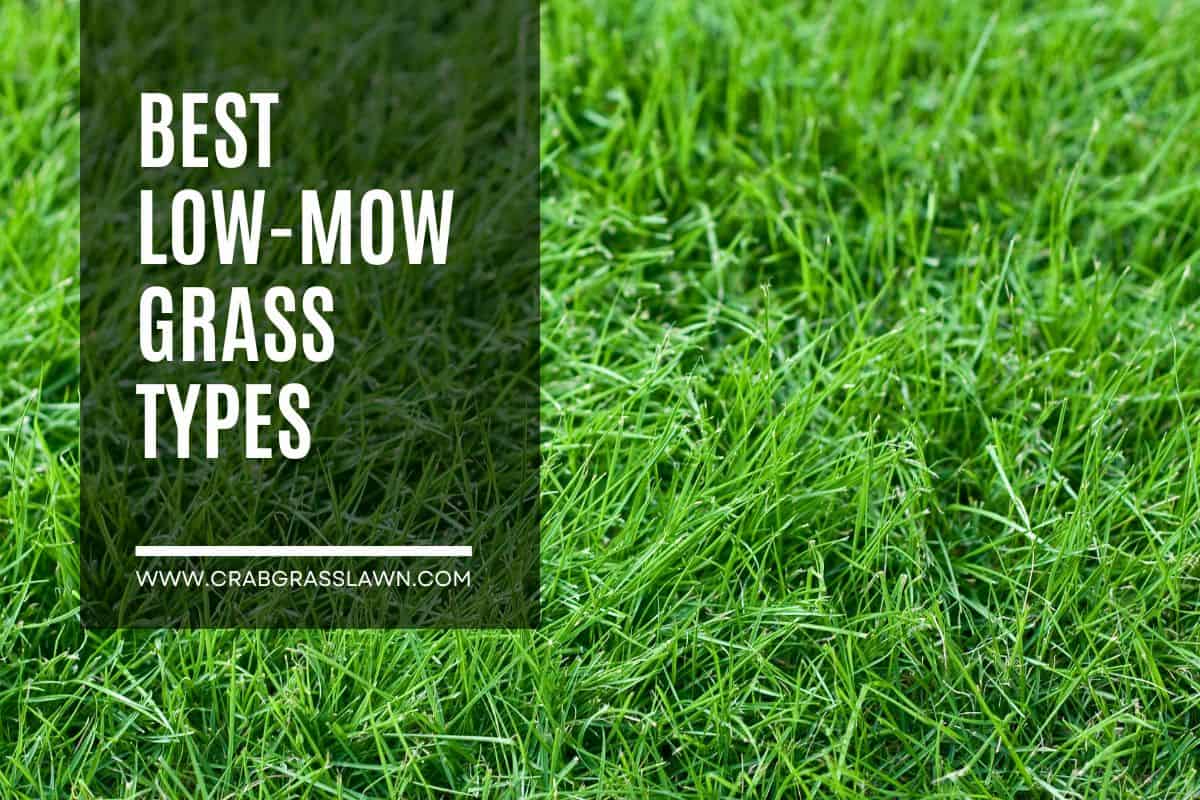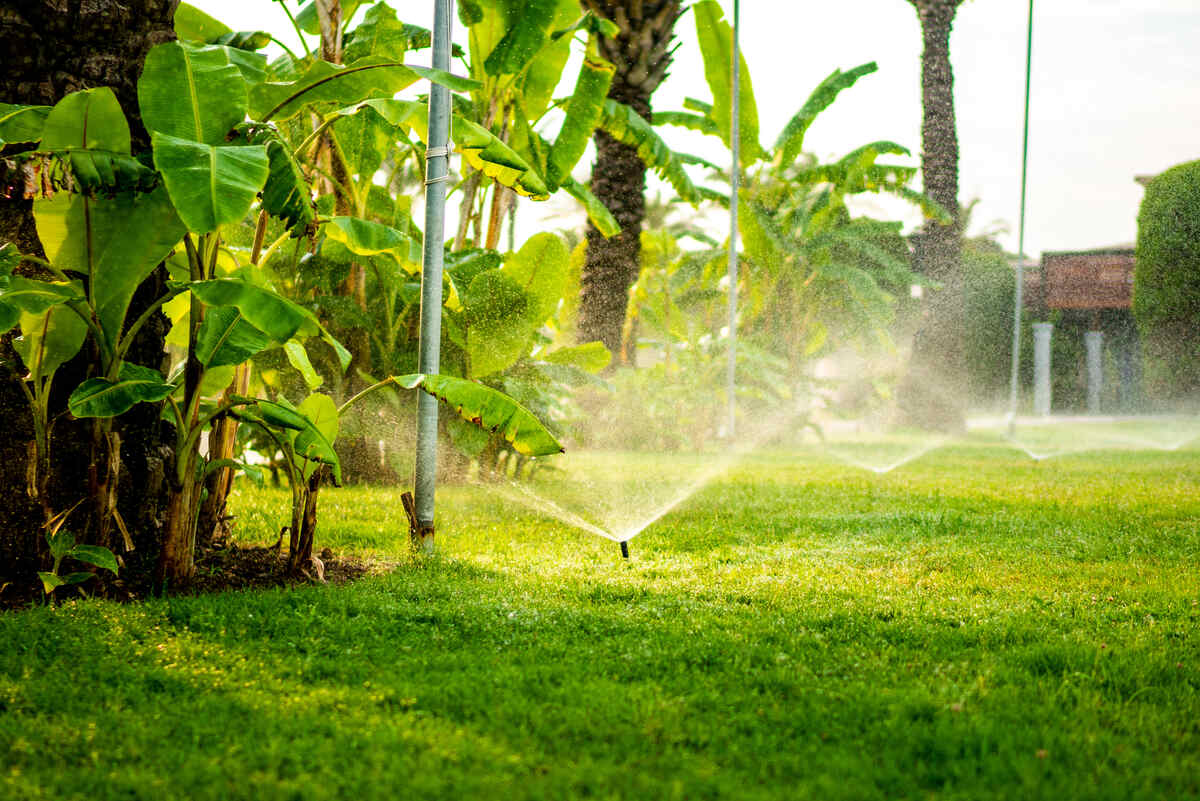
Mowing the lawn is perhaps one of the most daunting lawn care tasks that must be done regularly. But you can enjoy a low-maintenance lawn by planting slow-growing grass.
Slow-growing grasses are just that, types of grass that grow slowly and therefore do not require frequent mowing or maintenance.
Fast answer
When we talk about slow-growing grasses, also known as low-maintenance grasses, there are several options that I have worked with, including:
- fine fescues
- buffalo grass
- bay grass
- centipede grass
- St. Augustine’s Wort
In this article, I will explain why these types of grass are considered slow cutting and why they may be a good choice for your lawn.
Affiliate Disclaimer: As an Amazon Associate and participant in various other affiliate programs, I earn a small commission at no additional cost to you from qualifying purchases.
buffalo grass
In the number one position is none other than Buffalograss (Buchloë dactyloides), a warm-season grass that is often chosen for lawns and landscapes, particularly in regions with hot, dry climates.
If you want to plant a slow-mowing grass, Buffalograss is a great choice due to its slow-growing habit that requires less frequent mowing.
Cutting condition
Speaking of which, buffalo grass The ideal is to mow the grass every two to four weeks. in its active growing season, which generally occurs during the warmer months of late spring to early fall. This period may vary depending on growth rate and desired appearance and may even be less during periods of slow growthas during:
- Drought,
- High temperatures,
- Winter months.
Buffalograss tends to go dormant in the winter months when temperatures are colder. During idle state, the cutting frequency can be reduced or stopped completely.
If mowing is necessary during this period, it should be done sparingly and the height of the mower can be raised to avoid stressing the grass.
Regarding height, Buffalo grass is often kept at a higher cutting height than other grasses, somewhere around 2 to 3 inches (5 to 7.5 centimeters). Mowing the grass at this height helps promote a healthier deep root system and helps suppress weeds.
Soil condition
Aside from the fact that it cannot be mowed, Buffalo grass is one of the few warm-season grasses that tolerates most soil conditions, although it does particularly well in sandy soils.
shadow condition
However, one of the disadvantages of Buffalo grass is that it does not do well in areas of partial shade, but does show some shade tolerance compared to other warm-season grasses.
While it can survive in partially shaded areas, its growth and overall health can be compromised in conditions with little sunlight.
Plant buffalo grass
Buffalo grass can be planted using grass seed, plugs, or sod.
Fine Fescue (Festuca spp.)
If you live in one of the northern states or specific transition zone areas and are looking to get rid of existing grass and establish a lush cool-season grass, fine fescue is one of the best types of cool-season grasses to use. can find. highly recommended.
Fine fescue is available in several different varieties, such as:
- Creeping red fescue,
- Chewing fescue,
- hard fescue
- sheep fescue,
All of which are known for their fine texture and slower growth rate.
Cutting condition
Due to their slow growth rate during the summer months and growing season, fine fescue grasses thrive even when cut every seven to fourteen days but this period may vary depending on the specific variety of fine fescue, local climate and growing conditions.
Fine fescue can be maintained at a higher growing height than other cool season grasses, which is equivalent to 2.5 to 4 inches. Mowing the grass at this height helps promote a healthier root system and can improve the grass’s ability to compete with weeds.
shadow condition
Although fine fescue can thrive in full sun, it is usually suitable for areas with partial shade or filtered sunlight.
Planting condition
The best time to plant fine fescue depends on whether you plant from seed or use sod or plugs. Remember, it is a cool season grass, growing more actively in colder temperatures. Therefore, late summer to early fall is generally the best time to plant fine fescue, and late summer to early fall is an ideal time to plant grass or plugs.
centipede grass
![Slow growing grass and short grass [No-Mow Alternatives] 2 Low Cut Grass Type: Centipede Grass](https://rankiq-prod.s3.us-east-2.amazonaws.com/82ca1cda-b843-433b-b856-ce6993d723e3)
Centipede grass (Eremochloa ophiuroides) is a species of warm-season grass which you will commonly find in the southern United States. Compared to other warm-season grasses such as Bermuda grass for a new or existing lawn, centipede grass offers countless benefits including low maintenance requirements, excellent drought tolerance, great adaptability to poor soil conditions, moderate tolerance to shade, strangulation-free growth, low nitrogen requirements, and superior pest resistance.
In case you were wondering, Bermuda grass can be used as warm-season residential grass or as livestock forage but it is not on this list because it has the fastest growth rate of all common warm-season grasses.
Cutting condition
This warm season grass requires less frequent cuttingmaking it an attractive option for those looking for a lower maintenance lawn.
It is important to note that while centipede grass has a slow growth rate, its performance can be influenced by several factors, including local climate, soil conditions, and maintenance practices.
- During the growing seasonDepending on the growth rate and desired appearance, centipede grass can be cut every 10 to 14 days.
- However, during periods of slower growth or drought, you may need to mow less frequently.
It is generally recommended that the cutting height of centipede grass be between 1.5 to 2.5 inches. Always follow the rule of one-third, which means you should never remove more than one-third of the grass height in a single cut. This helps maintain a healthy lawn and minimizes stress on the lawn.
Centipede grass features a stoloniferous growth habit, meaning it spreads through above-ground runners called stolons, allowing it to form a dense turf over time. Once established, it has good drought tolerance and can withstand periods of dry weather.
Soil condition
Compared to other warm-season grasses, centipede grass requires fewer nitrogen applications, and excessive nitrogen fertilization can cause thatch buildup and negatively affect growth rate.
Planting condition
Centipede grass can be planted using seeds, sod, and twigs, which are small sections of grass that include runners or stolons with knots and leaves.
Zoysia Grass
Certain varieties of zoysia grass are known for their slow growth and dense turf. Zoysia requires less frequent mowing compared to other warm-season grasses.
‘Emerald’, ‘Zenith’ and ‘Compadre’ are examples of zoysia varieties with lower cutting requirements.
Emerald, Zenith and Compadre zoysia grass varieties are often used for residential lawns, low-maintenance lawns and golf courses, and are acclaimed for their fine leaf structure and thick mat growth, which helps suppress weeds. herbs.
Cutting condition
Emerald Zoysia has a slow to moderate growth rate, so it typically requires less frequent mowing compared to faster growing grasses like Bermuda grass.
These varieties of zoysia grass generally need to be mowed every 7 to 14 days but remember again to never remove more than one-third of the height of the grass in a single cut.
I recommend maintaining a cutting height between 1.5 to 2.5 inches for emerald zoysiabut these figures can vary depending on factors such as the specific cultivar, local conditions, and personal preferences.
Soil condition
Grass varieties Emerald, Zenith and Compadre zoysia exhibit some salt tolerance such as seashore paspalummaking it suitable for coastal areas where salt spray may be a factor.
In addition to this, they are known for their resistance to chinch bugs, which are common pests of certain grasses and are well adapted to high summer temperatures, so they thrive in warm climates.
Planting condition
Zoysia grass can be planted with seeds, sod, plugs and twigs.
tall fescue
The words tall fescue and fine fescue are often used interchangeably, and although they are two common cool-season grasses, there are some clear differences between the two types.
Tall fescue has a coarser texture compared to fine fescue and is a bunch grass, meaning it grows in clumps rather than spreading via rhizomes or stolons.
Cutting condition
The growth rate of tall fescue can vary depending on factors such as climate, soil conditions, and management practices. Tall fescue is generally considered to have a moderate growth rate compared to other cool-season grasses, such as Kentucky bluegrass.
Tall fescue shows more vigorous growth during the cooler spring and fall seasons. During this active growing season, you may need to mow tall fescue grass more frequently.
The recommended cutting height for tall fescue varies between 2.5 to 4 inches and depends on factors such as local climate, soil conditions and specific characteristics of the cultivar.
shadow condition
Additionally, tall fescue is known for its adaptability to a wide range of soil types and climates. It performs well in both sunny and partially shaded areas, while fine fescues exhibit several growth habits, including clustering and creeping.
Some species of fine fescue spread by rhizomes or stolons, creating a more spreading or mat-forming turf.
Before you leave…
The next step is to determine which slow-cut grass is right for your lawn, after which you can decide whether you want to establish the grass using seed, sod or plugs. Also be sure to choose the best grass seed for your lawn, even if it is not the low-cut type of grass.
Finally, read my next article to understand how long it will take for grass seeds to grow, which depends on several factors such as climate, soil moisture, time of year, and grass species.
![Slow growing grass and short grass [No-Mow Alternatives] 3 Alex Kuritz](https://www.crabgrasslawn.com/wp-content/uploads/2020/06/alex-e1612226582846.jpg)
Hello, Alex Kuritz here. When I was a kid, I remember my family had one of the best lawns in the neighborhood. Richly green and lush. Growing up, I did a lot in terms of tending and caring for not only my family’s lawn but also my neighbors’ lawns. I can say that I have years of experience and I am here to share it with you.



![Slow Growing Grass and Short Grass [No-Mow Alternatives]](https://media.wired.com/photos/65a19bc90bef0f9156972d07/191:100/w_1280,c_limit/ebay-science-GettyImages-1019313660.jpg)
![Slow Growing Grass and Short Grass [No-Mow Alternatives]](https://clearskinregime.com/wp-content/uploads/2024/01/Lipstick-Hacks.webp)





